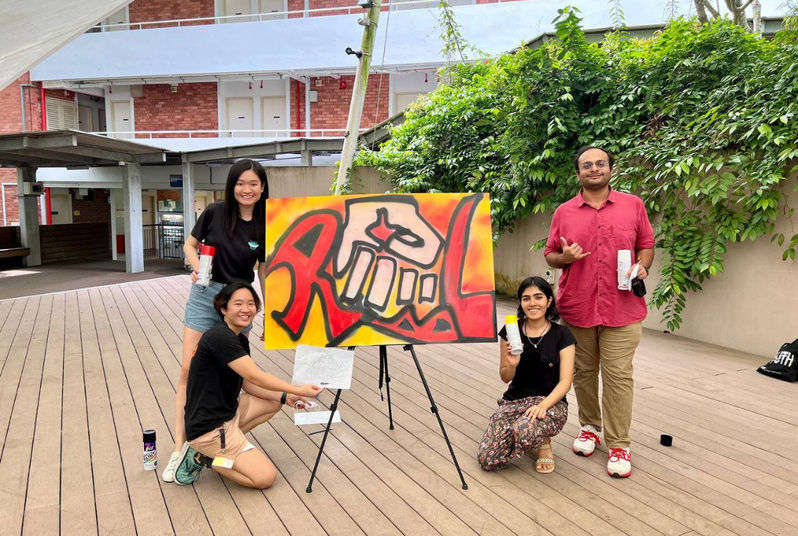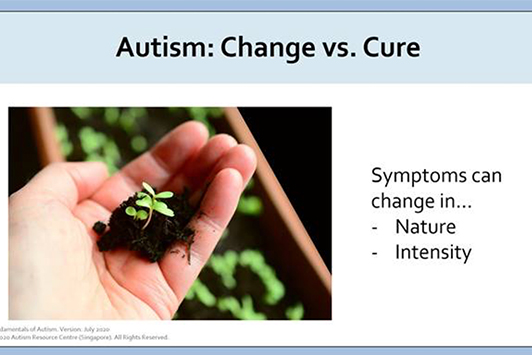NUS students took a step into the world of graffiti art and immersed in this versatile form of art, while being educated on its art form at “The Graffiti War”, an event held at the Yusof Ishak House, on 18 June 2022.
The day started with an introductory course to the art form of graffiti, followed by a short demonstration by an instructor and then a hands-on activity in planning a graffiti piece. The challenge was to fit three letters into an A4 paper and the team member with the best conceptualisation had their artwork represented by the team.
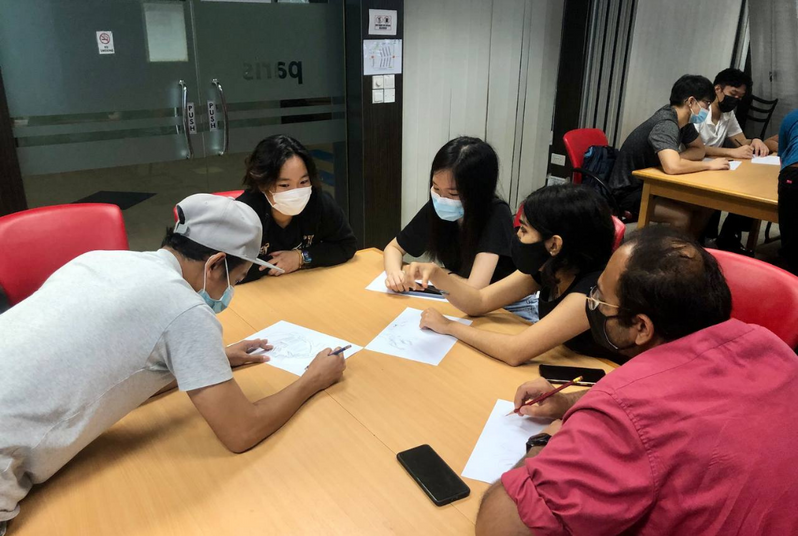
Next, students put the conceptualisation into action with a hands-on demonstration. They practiced spray painting on mahjong paper, before graffitiing their final piece.
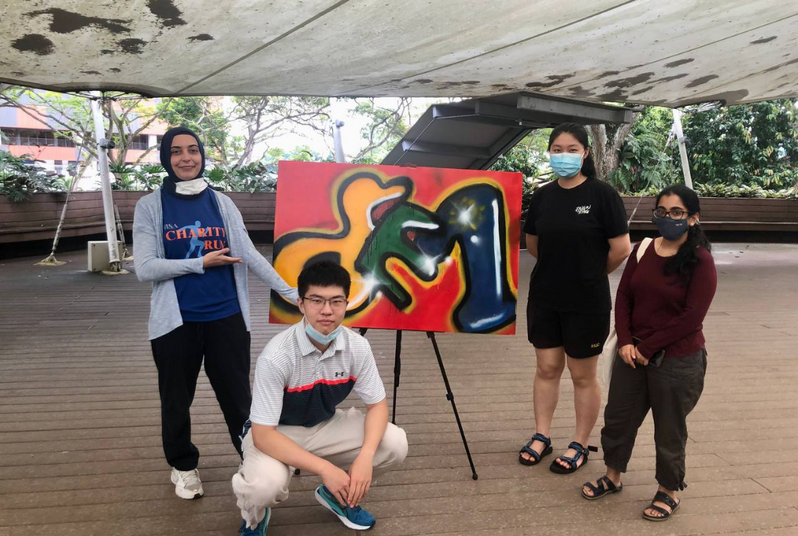
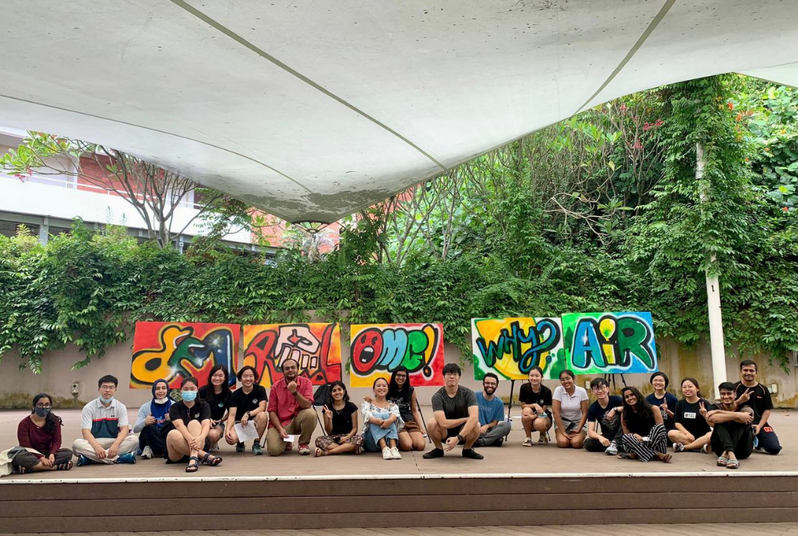
When asked which was the most enjoyable activity, Tan Hin Khai Stephen, Year 4 Computer Science student, said it was hands down the execution of his team’s graffiti design and getting hands on with the aerosol paints. He highlighted: “It was fun and a great opportunity to take part in something lighthearted with a new group of people.”
“I got to appreciate the diverse NUS campus culture, with people from all over the world in my group. Learning and understanding how they viewed the world and the things they do; it was enriching and interesting to hear their lived experiences.
For example, I heard the perspectives of Sri Lankan students on how they felt about the ongoing economic situation in their country. I would not have been able to meet such interesting people in such a conducive medium for discussion without having attended this event,” Stephen elucidated.
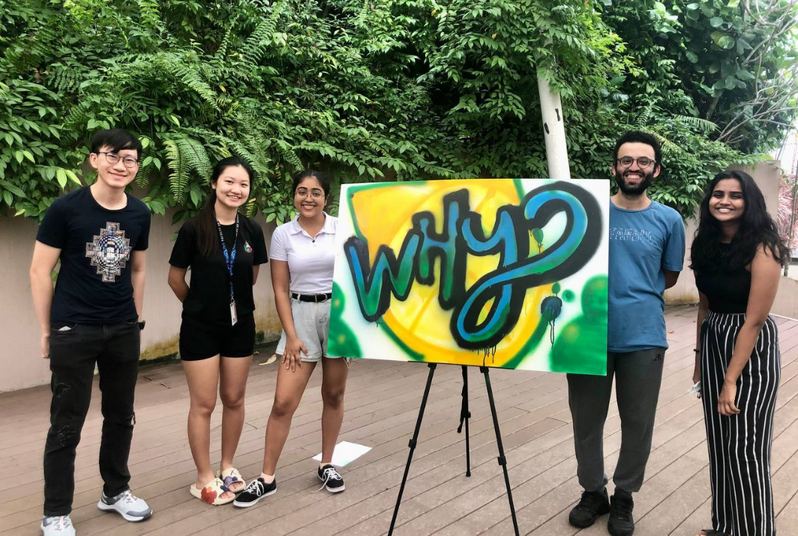
Graffiti Art – An art with humble beginnings
“Street art has come from a very humble small beginning from little scratches on a wall to a modern and respected art form with many intricacies. It started with simple, grim “memes” like “Kilroy was here” (no place, and no country, was beyond the reach of America's might), representing the might and power of the US military, turning up wherever they invaded in WW2, to the actual art movement in the 60s and 70s until today,” Stephen said.
“These are interesting notions that I can even trace forward to today’s prevalent meme culture, and how ubiquitous it has become as a global phenomenon in almost every country,” Stephen added.
Learning graffiti art
“I have learnt how to appreciate how graffiti art is designed and created. Making it is not as easy as it looks at the outset, with various techniques required to create the lines, curves, gradients and highlights. This makes the artwork stand out,” Stephen remarked.
“Different art forms and meanings can be produced using spray cans,” Chin Sek Yi, Year 1 Life Science student, added in amazement. “Our group used several bright colours like orange, yellow and neon green to paint an image of a lemon, which signifies "refreshing", which encapsulated the theme for Graffiti War which was refreshing.”
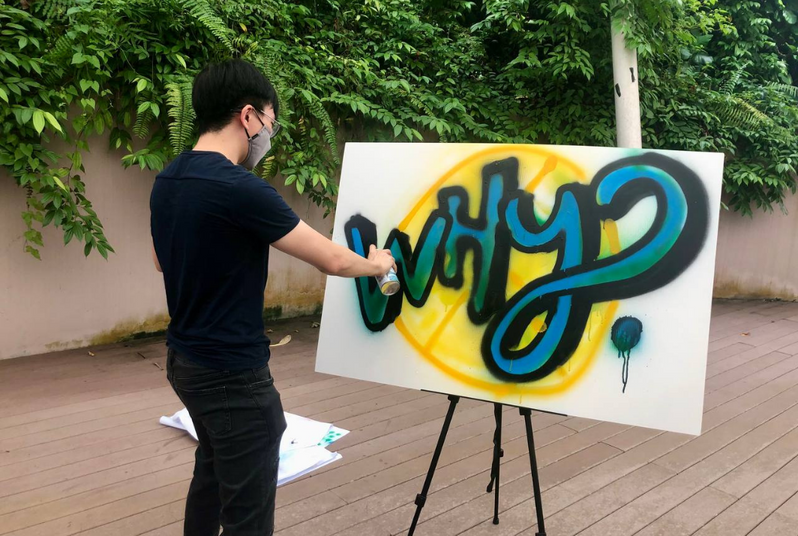
Compared to other groups with more jagged fonts, our group uses a more cursive font, which provides a more soft and lively effect. This is because besides the colour scheme, the word's font also gives a different feel to the art piece,” Sek Yi said.
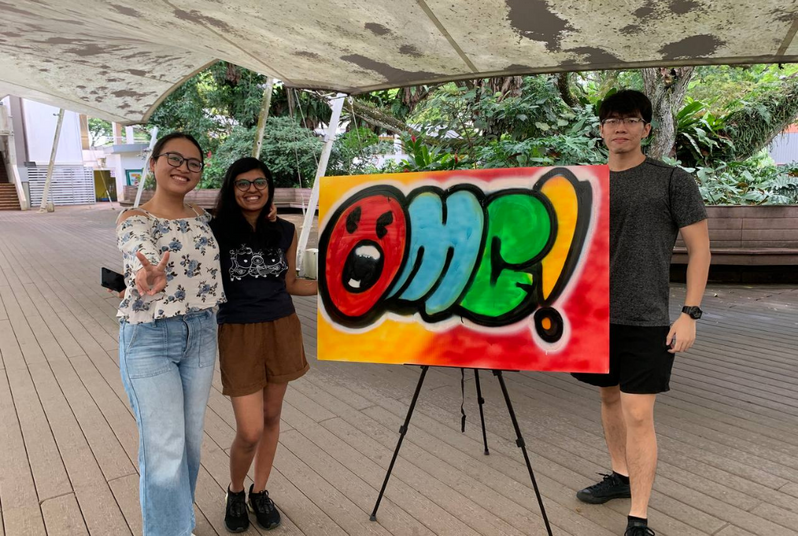
“Overall, our art piece would not be perfect if it wasn't for my group members' "artistic" touch. Some members were quite good with the spray cans, "saving" our work whenever one of us with shaky hands managed to "destroy" our work. And I remember the fun and laughter that we all had whenever these mini disasters happened. No wonder it's called graffiti WAR, it's a roller coaster ride of art-ruining and art-saving events and it's a fun war that I genuinely enjoy,” Sek Yi said.
Graffiti interlaced in deeper meanings
“Graffiti can be much more than just a juvenile act of vandalism; it is a call to attention to some message that the artist wants to convey. Be that just to say, “I am here”, as a part of a political movement or something fun,” Stephen explained.
“This epithet is something I would not have understood if I had not attended this event and firsthand participated in the creation of such a work of art and being given some time to reflect on it,” Stephen surmised.
Art Connects
“I would invite the same group of friends if I were to attend an event like that again. I had so much fun with them, and we clicked well!” said Sek Yi.
“I have also witnessed first-hand how art can connect and be a common medium of expression to capture the zeitgeist of a moment in time regardless of background from a diverse group of people such as my group, ” remarked Stephen.
“I would certainly want to sign up again and meet more such interesting people!” He ended off elatedly.
Share:
Contributor
Writer: Shanice Poh, Year 2, NUS Business School


